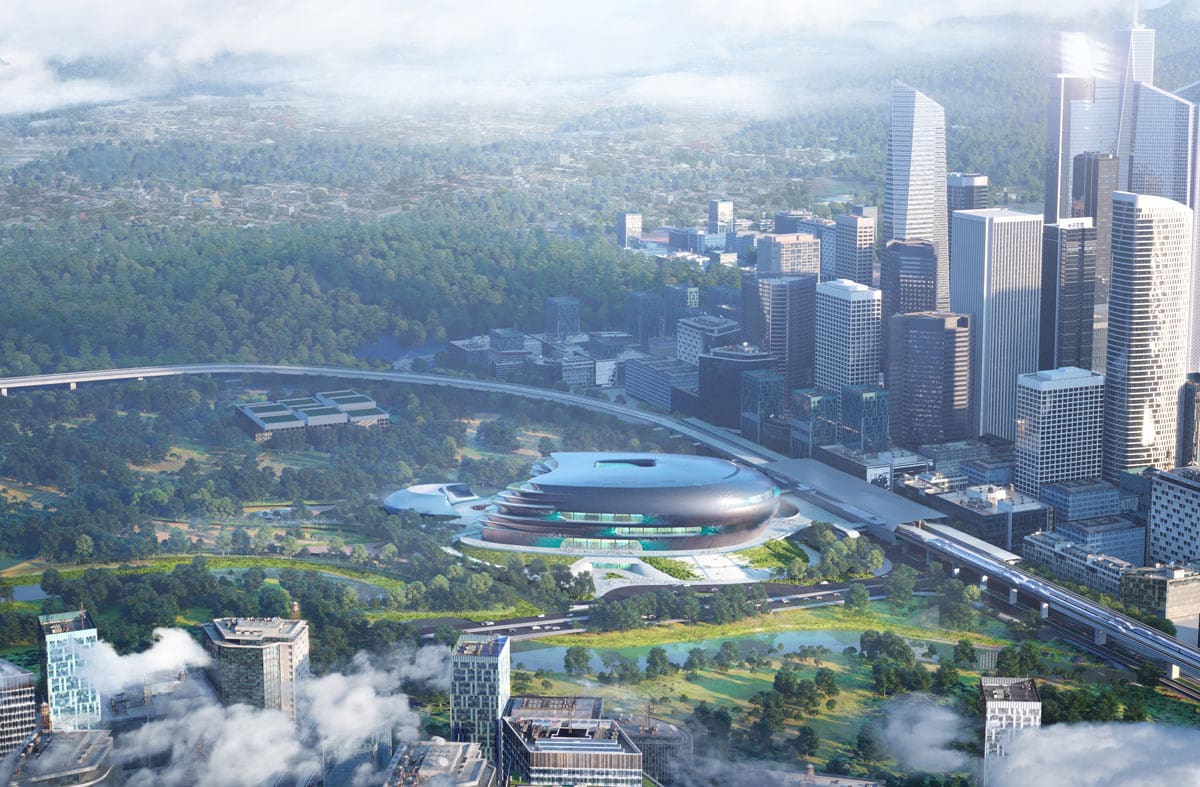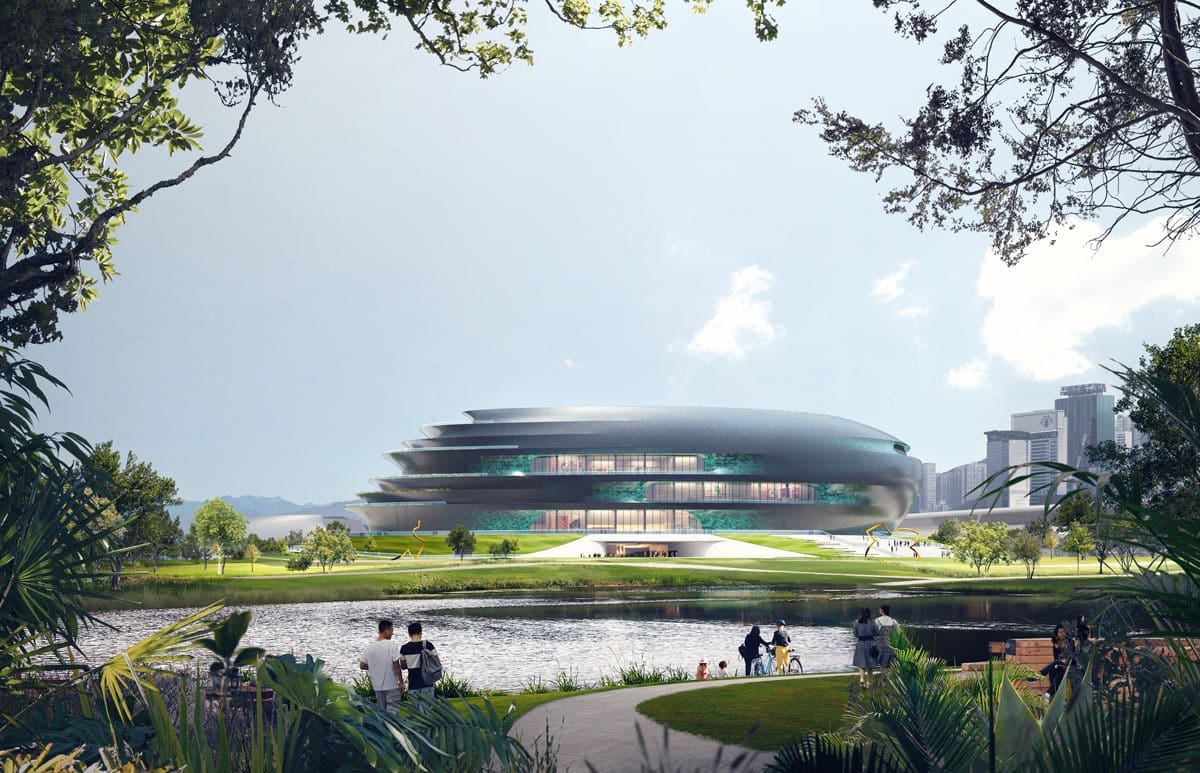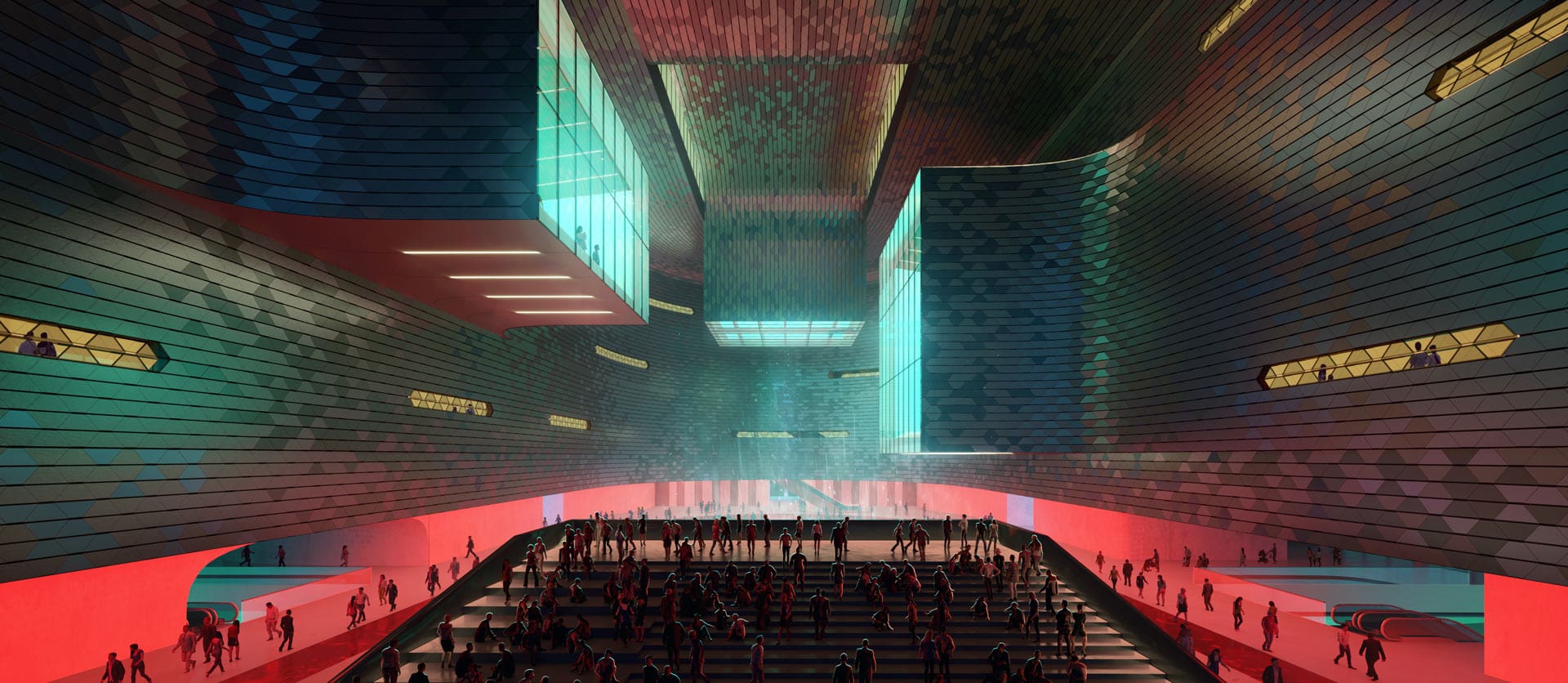The Ripple in the Water
It is universally-acknowledged that when a singular pebble is dropped into water, it will have far-reaching ripple-effects. That means, in Layman’s terms, that small actions can have large, positive impacts.
British firm, Zaha Hadid Architects, hope to make a big impact and have recently revealed developing plans on a new pebble-shaped science and technology museum in Shenzhen, China that will have lasting effects for years to come in the name of science. With this new museum, China’s scientists can unlock more discoveries for the future of science and technology and share their findings to the public. Looking to be up-and-running by late 2023, the 125,000 square-metre space will include a mixture of public spaces and educational facilities.

Inside the U-shaped plan will bend around the atrium that is designed to cater to the orientation and navigation. Featuring the architecture firm’s signature fluid lines, the building will provide views of the Guangming Park. Large glazed areas of the atrium will allow passers-by the opportunity to have a sneak peak inside to the many galleries being used for one of the many exhibitions on offer.

The eco-friendly strategies that the team will be using will play a key role in the design, making the museum a new “benchmark for sustainability,” according to Zaha Hadid Architects. This will include the Three Star System – China’s green building standard – by using the high-performance thermal insulation and energy-efficient glazing.

With the museum’s links to schools, universities and innovation centres across China, this little pebble getting dropped in the big pond will have effects that will last for years to come.



